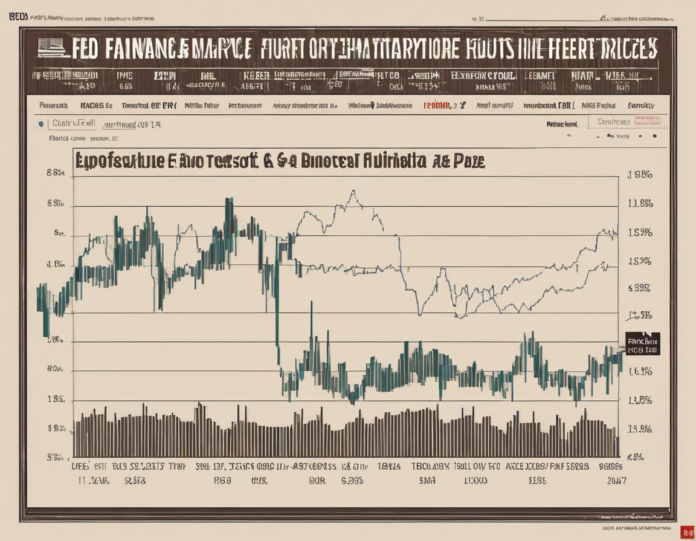Investors and financial market enthusiasts constantly seek to analyze Federal Finance (Fed Finance) share price trends to make informed decisions. In the ever-evolving world of finance, understanding the historical performance and potential future movements of a company’s stock is crucial. This article will delve into the intricate world of Fed Finance share price trends, providing valuable insights and analysis for investors and traders alike.
Understanding Stock Price Trends
Stock price trends are a reflection of a company’s financial health, market conditions, investor sentiment, and overall economic landscape. Fed Finance, being a prominent player in the financial sector, is subject to various internal and external factors that can impact its stock price. Analyzing these trends involves looking at historical data, technical indicators, market news, and fundamental analysis.
Historical Data Analysis
One of the fundamental aspects of analyzing Fed Finance share price trends is examining historical data. By studying past price movements, patterns, and fluctuations, investors can gain valuable insights into potential future price movements. Analyzing long-term, mid-term, and short-term trends can help predict possible scenarios and make informed investment decisions.
Technical Indicators
Technical analysis plays a vital role in understanding Fed Finance share price trends. Various technical indicators such as moving averages, Relative Strength Index (RSI), Bollinger Bands, and MACD can provide valuable information about the stock’s price momentum, volatility, and potential reversal points. By studying these indicators, investors can identify buy and sell signals and make informed trading decisions.
Market News and Events
Market news and events can significantly impact Fed Finance share price trends. Announcements related to interest rates, economic reports, regulatory changes, mergers and acquisitions, and company performance can lead to sudden price movements. Staying updated with the latest news and events can help investors anticipate market reactions and adjust their positions accordingly.
Fundamental Analysis
Fundamental analysis focuses on evaluating a company’s financial health, management team, business model, competitive landscape, and growth prospects. By analyzing Fed Finance’s financial statements, quarterly reports, earnings, cash flow, and balance sheet, investors can assess the intrinsic value of the stock and make informed investment decisions based on its fundamentals.
Factors Influencing Fed Finance Share Price Trends
Several key factors can influence Fed Finance share price trends:
-
Interest Rates: Changes in interest rates set by the Federal Reserve can impact Fed Finance’s borrowing costs, profitability, and overall stock price.
-
Economic Indicators: Economic indicators such as GDP growth, inflation rates, unemployment data, and consumer sentiment can impact Fed Finance share price trends.
-
Regulatory Environment: Changes in regulatory policies and guidelines governing the financial sector can influence Fed Finance’s operations and stock price.
-
Competitive Landscape: Competition from other financial institutions, fintech companies, and market disruptors can affect Fed Finance’s market share and stock performance.
-
Global Events: Geopolitical tensions, global economic trends, and events can have a ripple effect on Fed Finance share price trends.
Analyzing Fed Finance Share Price Trends: Case Study
Let’s consider a hypothetical scenario where Fed Finance has recently announced better-than-expected quarterly earnings, leading to a surge in its stock price. Technical indicators such as RSI and moving averages signal an overbought condition, indicating a potential price correction. Market news reveals a possible interest rate hike by the Federal Reserve, which could impact Fed Finance’s profitability and stock valuation. By combining historical data analysis, technical indicators, market news, and fundamental analysis, investors can make informed decisions on whether to buy, hold, or sell Fed Finance shares.
FAQs:
1. What are some common technical indicators used to analyze Fed Finance share price trends?
Common technical indicators include moving averages, Relative Strength Index (RSI), Bollinger Bands, MACD, and stochastic oscillators.
2. How can market news and events impact Fed Finance share price trends?
Market news and events such as interest rate changes, economic reports, mergers and acquisitions, and regulatory updates can lead to sudden price movements in Fed Finance shares.
3. How important is fundamental analysis in understanding Fed Finance share price trends?
Fundamental analysis is crucial in evaluating Fed Finance’s financial health, business prospects, and intrinsic value, providing valuable insights for long-term investors.
4. What external factors can influence Fed Finance share price trends?
External factors such as interest rates, economic indicators, regulatory environment, competitive landscape, and global events can impact Fed Finance share price trends.
5. How can investors use historical data analysis to predict Fed Finance share price trends?
By studying past price movements, patterns, and trends, investors can gain insights into potential future price movements, helping them make informed investment decisions regarding Fed Finance shares.
In conclusion, analyzing Fed Finance share price trends requires a comprehensive understanding of historical data, technical indicators, market news, fundamental analysis, and key influencing factors. By utilizing a combination of these tools and strategies, investors can make informed decisions and navigate the dynamic world of stock market investing.












